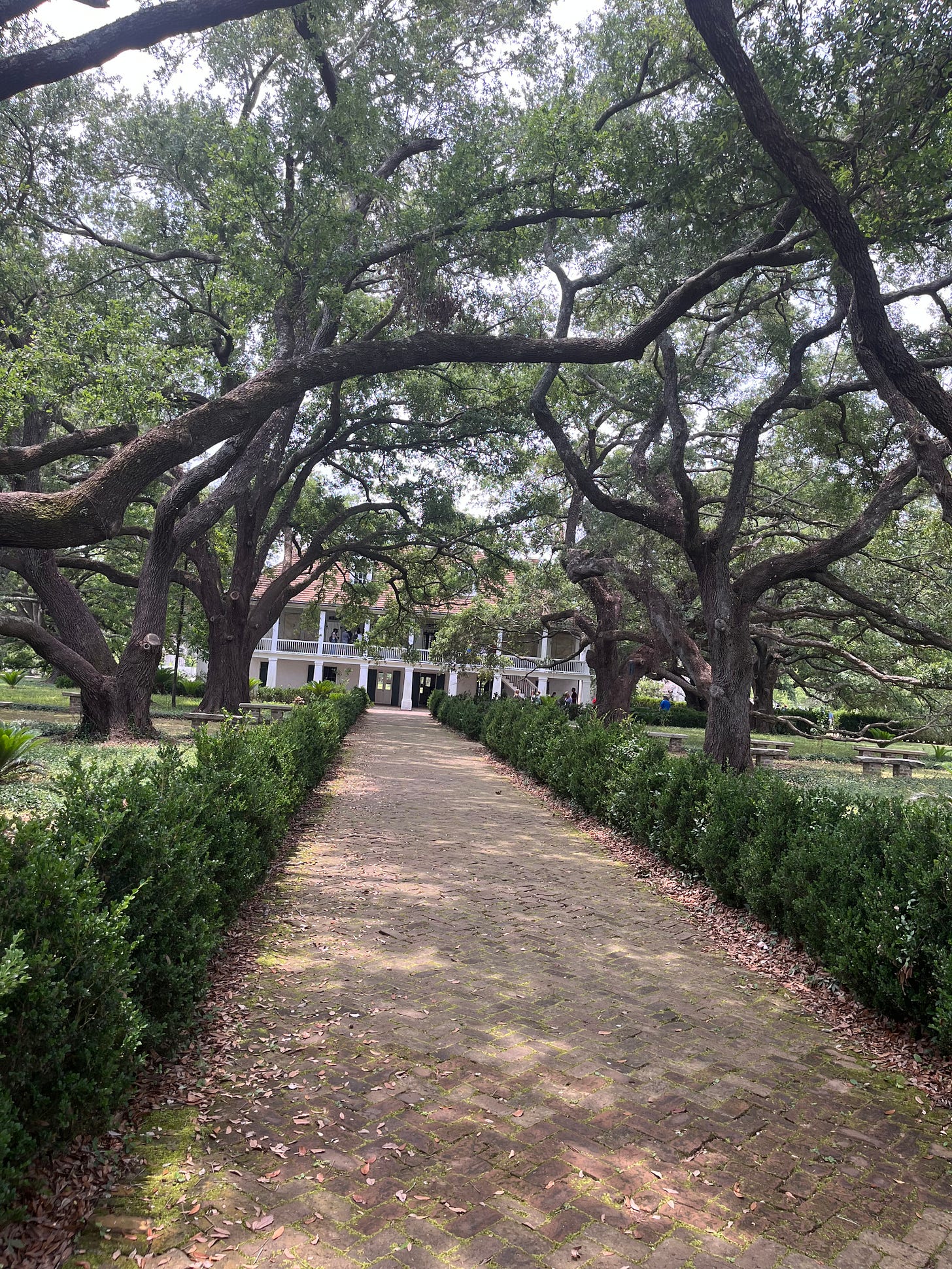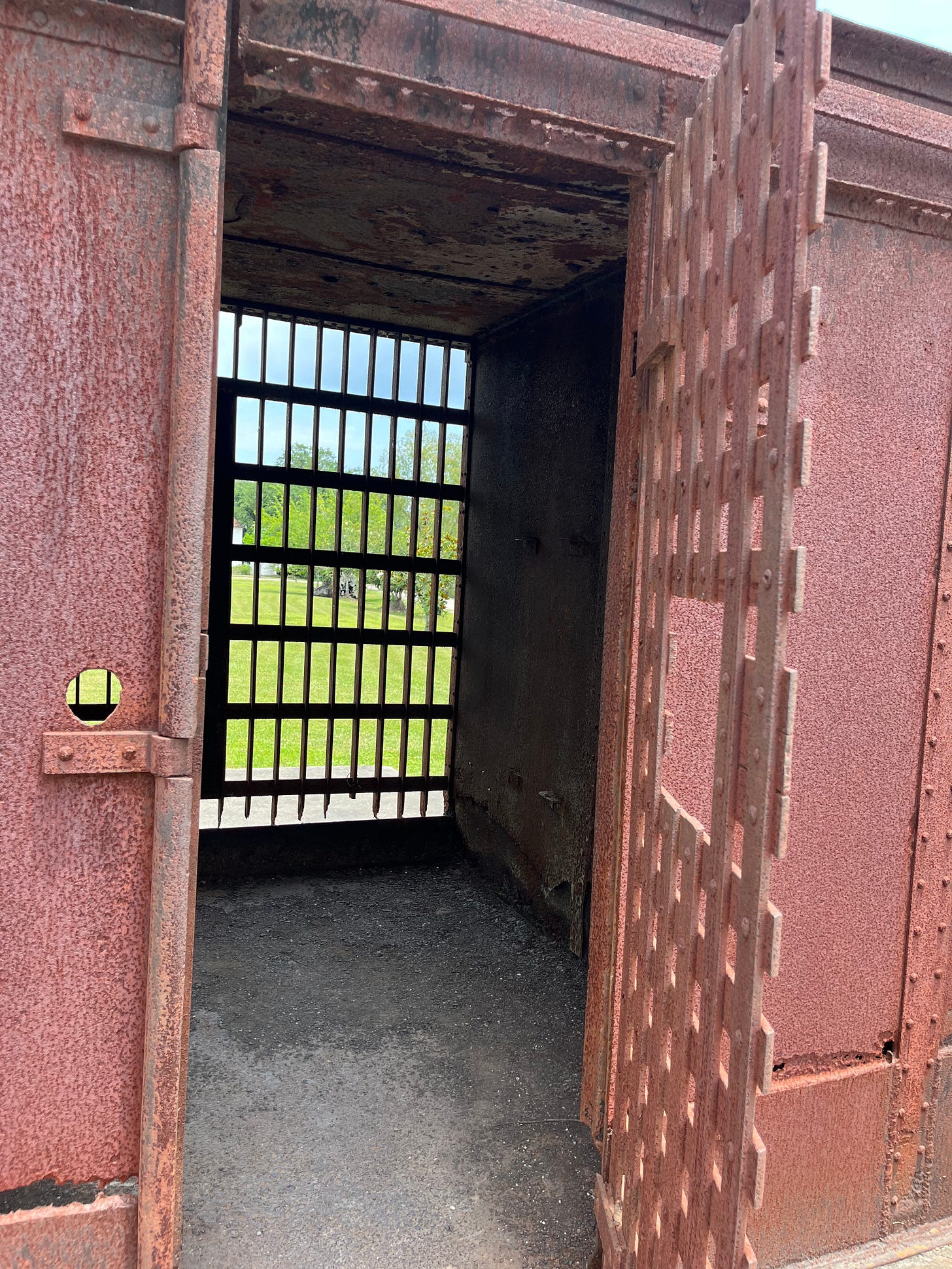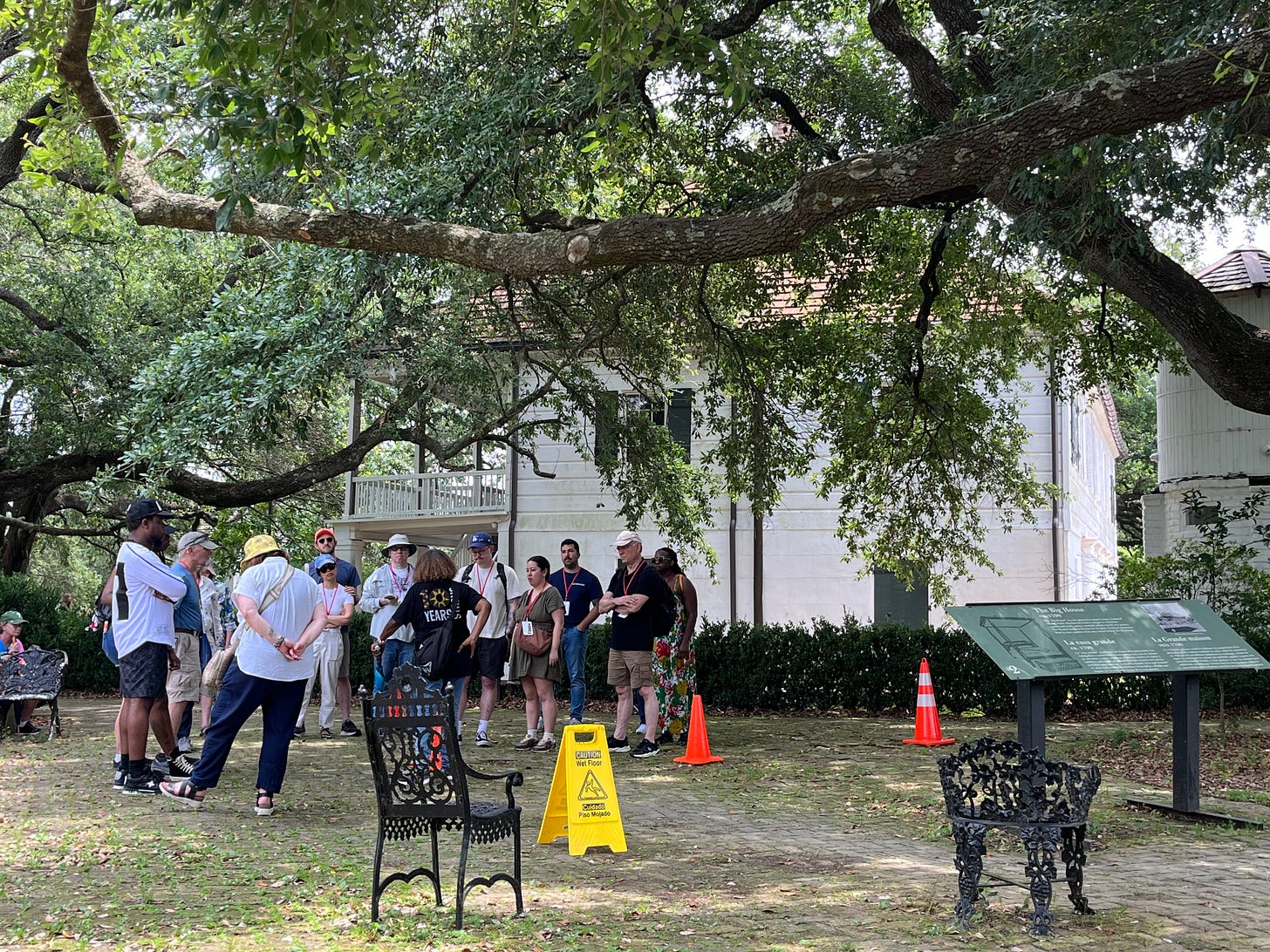Whitney Plantation another reminder of the brutality of slavery
Gazette continues to hold public officials accountable for conflicts of interest
Please consider supporting The Front Page with a paid subscription: HERE
"My poppa was strong. He never had a lick in his life. He helped the master, but one day the master says, 'si, you get to have a whoopin'" and my poppa says, "I never had a whooppin' and you cain't whoop me." An' the master says, "But I kin kill you," and he shot my poppa down. My mamma tuk him in the cabin and put him on a pallet. He died."
This plantation wasn’t Tara.
This was a real plantation where blacks toiled, were tortured and abused for generations.
This is an account of brutality and inhumanity.
This was what the real life of a slave was like.
While there are still plantations in South Louisiana where you can have a wedding reception, the Whitney Plantation north of New Orleans is not one of them.
It's focus is on the abomination of slavery.
And not the watered down version.
After writing about the power of The Legacy Museum in Montgomery, Alabama and its shocking accounts of hundreds of lynchings in the post-Civil War south, a reader suggested the Whitney Plantation was even more shocking.
So on a hot and sticky day last week - one day before beginning my journey home - I visited The Whitney Plantation.
Like The Legacy Museum, there is no laughter and few smiles from those touring the grounds.
Historian Gwendolyn Midlo Hall devoted a big chunk of her career to compiling a database of 107,000 enslaved peoples in Louisiana and telling some of their stories.
At the conclusion of the Whitney tour is a memorial dedicated to those enslaved peoples. Spread over 18 walls on 216 granite slabs are photos and quotations from the slaves who worked on the plantation.
It is a chilling account of a world the federal government is now trying to erase.
"I remembers once a youngster run away and dey put de bloodhounds behind him. When dey caught him, dey put a horse to him and drag him through de woods, drag him to de house, de breath plum out of him. Dey dig a hole and throw him in it. And later you hear dat boy groanan under the ground - he ain't dead."
The accounts of working the Sugar Cane fields, of being locked in metal cages in the oppressive heat of Louisiana and being whipped and beaten for even the smallest of infractions is equally shocking.
It makes you wonder about man's inhumanity to man and why all these generations later, the current president is trying to erase that past.

The Whitney Plantation is a non-profit museum, but it was still operating as plantation with black share-croppers up until 1975.
The museum and historic site was founded by a White trial attorney from New Orleans named John Cummings who spent more than $10 million of his own money to preserve it as a historic site where 350 enslaved peoples worked for generations.
When it opened for the first time in 2014, the Christian Science Monitor wrote, "Unlike other antebellum plantations on the winding River Road along the Mississippi known for their manicured gardens and as exotic locations for weddings, Whitney Plantation has a much different purpose: It wants to tell thousands of visitors each year the tragic story of slavery in the United States."
It took Cummings 16 years to make the site a historic reality after purchasing the land from a nearby petrochemical company.
While researching the property, Cummings found household inventories from former owners that provided an identify to those abused..
"The second most valuable property here next to the real estate was slaves,” Cummings told the Christian Science Monitor in 2014. “One female slave was described as a good breeder. She was worth more than a woman who did not have many kids. When I saw that, the light went on. I had to find out more about it.”
Cummings went on to read more than 400 books on slavery and realized there was an ignorance about slavery.

That ignorance is being brought back by the Trump administration's attempts to eliminate all funding for what they seem to believe is an assault on white culture.
Ashley Rogers, the executive director of the Whitney Plantation, recently said that cuts by the Trump administration to nonprofits like the Whitney Plantation were endangering the mission of historic sites.
President Trump issued an executive order criticizing institutions trying to "rewrite our Nation's history, replacing objective facts with a distorted narrative driven by ideology rather than truth."
He seems to believe that brutal legacy is a "distorted narrative."
Soon after Trump's order was issued, Rogers received two notices from the Institute of Museum of Library Services that grants from a program supporting African-American museums totaling almost $350,000 had been rescinded.
The federal agency acting directory, Keith Sonderling, wrote that the grant "is no longer consistent with the agency's priorities and no longer serves the interest of the United States."

Substack columnist Heather Cox Richardson wrote this last week after the House of Representatives passed its budget:.
"This bill highlights a truism: In the United States, racism has always gone hand in hand with the concentration of wealth among the very richest people. By driving white fear of a darker-skinned other, elite southern enslavers convinced the poor white farmers who lost their land in the cotton boom of the 1850s to vote for politicians who insisted that the primary responsibility of the federal government was to protect human enslavement."
"I remember how my master would come and get my sister, make her take a bath and comb her hair, and take her down in the quarter all night, den have de nerve to come around de next day and ask her how she feel."
Rape, murder and brutal assaults were all part of the reality of the business model.
In 1811, the German Coast uprising occurred at plantations all along the Mississippi in southern Louisiana where some 500 enslaved people rose up against their enslavement.
The revolting slaves hoped to capture the city of New Orleans, free all the enslaved people and and find their way to a free country. At the memorial on the Whitney Plantation, the enslaved believed their actions mirrored those of the Founding Fathers.
The rebellion was stopped and the leaders were caught, decapitated and their heads put on sticks all along the Mississippi River.
I never read about that in my high school history book.
"The most cruel master in St. John the Baptist Parish during slavery time was a Mr. Vaisin Mermillion. One of his cruelties was to place a disobedient slave, standing in a box, in which there were nails placed in such a manner that the poor creature was unable to move. He was powerless even to chase the flies or sometimes, ants crawling on some parts of his body."
During the 1970s, author Alex Haley's book Roots was turned into a blockbuster television mini-series that followed several generation of one slave family. It was eye-opening for most white people.
The current administration is trying to remove the accomplishments of blacks from history books.
It is trying to erase the legacy of slavery.
It is trying to stop funding to places like The Whitney Plantation and pretend that racism does not exist.
We can never let that happen.
It is our shared history and that will never change.
Queensbury ethics
In an editorial this week, the Schenectady Gazette recapped some of the ethics problems it is seeing from public officials, including two Queensbury Town Board members - Tim McNulty and Michael Dixon.
The Gazette editorial begins:
We wouldn’t need ethics laws if government officials just avoided situations that obviously represent a conflict of interest.
But ethical conduct isn’t always obvious to some people. And some people just don’t care if their conduct is ethical or not.
We’ve seen it recently in Saratoga Springs with public officials using their authority over public employees to get them to do work at their homes.
We’ve seen it in Queensbury, where a county political party leader with significant influence over the selection of candidates for office serves on the town board, where he can use his political clout to influence government decisions by other board members of his party.
And now we’re seeing it in the town of Perth, where Councilman Bob Fisher is indignant over an audit by the state comptroller’s office that found he had a conflict of interest when he voted to channel a $13,000 repair of a town truck to the automotive company he owns.
Since I filed an ethics complaint last November about the Queensbury conflict of interest Queensbury's own Ethics Committee ruled in February there WAS a conflict of interest and the Town Board should address the problem.
So far, six months later, it has not.
The Gazette ends its editorial this way:
Those in office who can’t understand this basic principle, and those who refuse to accept it, have no business serving in such a position of trust.
Either figure it out or step down and let someone else serve in your place.
It’s not that difficult at all. It’s really not.
For two Town Board members in Queensbury is has exceptionally difficult.
GOP chaos
Republicans in the House of Representatives included in its passage of the budget a provision that requires judges to collect a monetary bond from parties seeking an injunction.
That's pay to play when it comes to lawsuits.
Penney for your thoughts
It may be the only thing I've supported during the Trump administration.
The mint announced last week it was going to stop making pennies. This is long overdue. I'm not a math wiz, but when it costs more to make a penny than its actual value, I know there is a problem.
With these measure moving forward, jars all over the country can be emptied and used for other things.
Ken Tingley spent more than four decades working in small community newspapers in upstate New York. Since retirement in 2020 he has written three books and is currently adapting his second book "The Last American Newspaper" into a play. He currently lives in Queensbury, N.Y.






We are in “Civil War 2.0: The idiocy edition.”
“It is not light that we need, but fire; it is not the gentle shower, but thunder. We need the storm, the whirlwind, and the earthquake.” - Frederick Douglass
I saw the true depravity of the human spirit during a walk across Fort Ord CA 1989.. A pick up truck drove by me a rebel license plate on the back. A trailer hitch with a noose attached.
I recall the horror in my mind. It struck fear in me. I never spoke of it to my fellow soldiers.
James Byrd was murdered by being dragged to death behind a truck in Jasper Texas years later. He was killed by avowed white supremacists. Makes me cringe to recall this.
The history you recall not seeing in history books of beheadings and heads mounted in sticks. This is real the truth of what happened. Wr must never forget